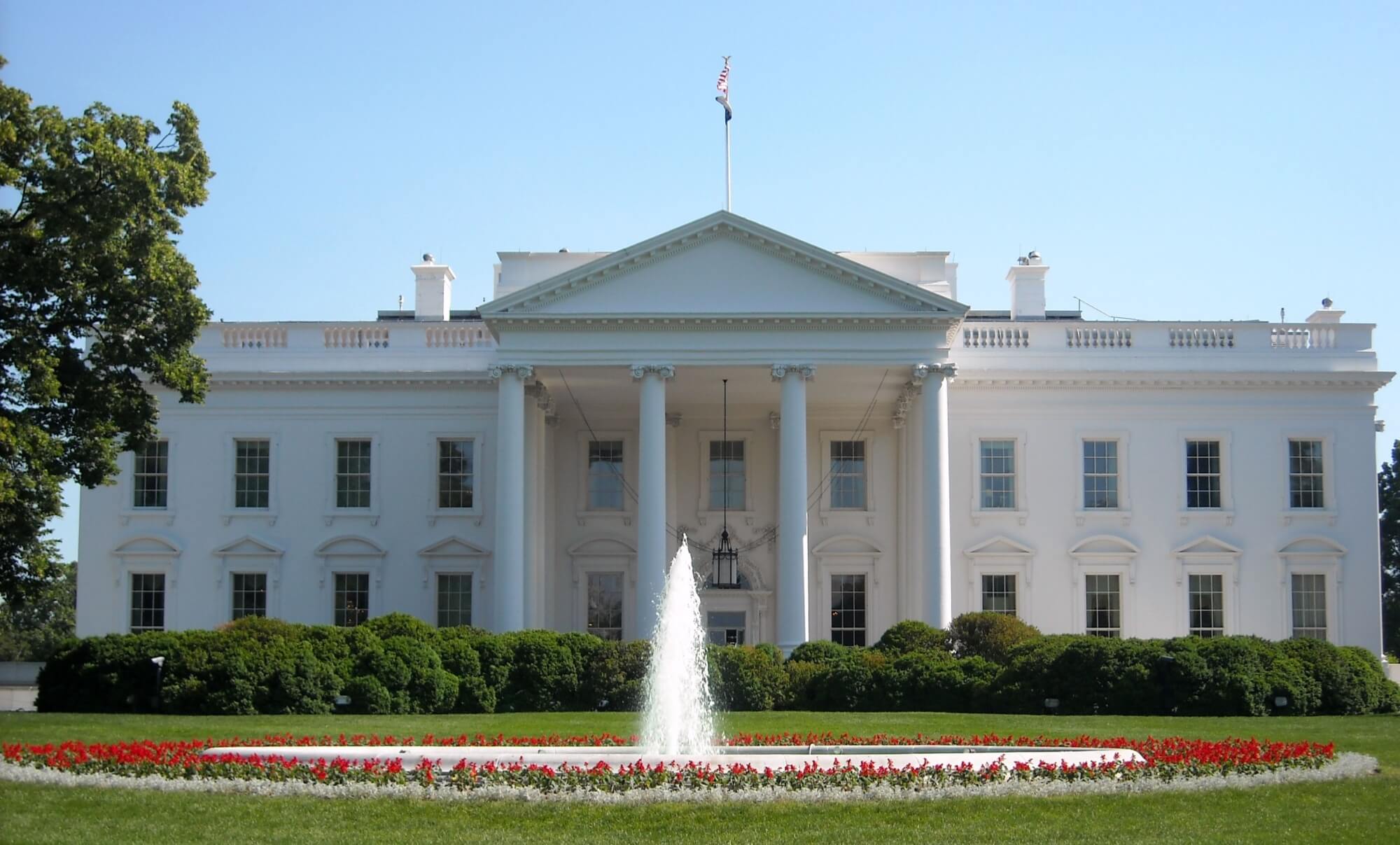Executive Branch
ARTICLE II OF THE CONSTITUTION
Article II of the Constitution vests all executive power in the president. Section 3 of Article II specifies that the president “shall take Care that the Laws be faithfully executed.”
The President of the United States, after signing Congressional acts into law, oversees most executive agencies tasked with implementing and enforcing legislative requirements. Although so called “independent regulatory agencies” operate outside of the president’s purview, their rules still equally apply to the public.
Agencies develop regulations to implement policies established by Congress under the direction of the president. These rules typically go through a rulemaking process that includes an advanced notice to gather early feedback, a proposed rule to collect further comments from the public, and a final rule that incorporates public comment and is added to the Code of Federal Regulations.
The Office of Information & Regulatory Affairs (OIRA, Oh-Eye-Rah), a unit of the Office of Management & Budget, is responsible for reviewing agency rules, and coordinating rulemaking activity across the federal government.

Midnight Regulations
Do presidents issue more regulations at the end of their administrations that at the beginning?
Reg Stats
Our REG STATS page is full of charts and data on regulations by presidential administration!
NOTABLE DOCUMENTS
A collection of executive orders issued by various presidents that focus on the rulemaking process, with an emphasis on Executive Order 12866.
Several other documents issued by the Office of Management & Budget, including Circular A-4, are also included. Reviewing these documents will help you understand how and why the rulemaking process functions the way it does today.
Executive Orders
- EO 12866 - Clinton, 1993
- View our Celebrating 25 Years of Executive Order 12866 event, which features photos and videos from the event and commentaries from OIRA administrators, congressional staff, agency leaders, and leading academics.
"The American people deserve a regulatory system that works for them, not against them: a regulatory system that protects and improves their health, safety, environment, and well-being and improves the performance of the economy without imposing unacceptable or unreasonable costs on society; regulatory policies that recognize that the private sector and private markets are the best engine for economic growth; regulatory approaches that respect the role of State, local, and tribal governments; and regulations that are effective, consistent, sensible, and understandable. We do not have such a regulatory system today.
With this Executive order, the Federal Government begins a program to reform and make more efficient the regulatory process. The objectives of this Executive order are to enhance planning and coordination with respect to both new and existing regulations; to reaffirm the primacy of Federal agencies in the regulatory decision-making process; to restore the integrity and legitimacy of regulatory review and oversight; and to make the process more accessible and open to the public. In pursuing these objectives, the regulatory process shall be conducted so as to meet applicable statutory requirements and with due regard to the discretion that has been entrusted to the Federal agencies."
- EO 13777 - Trump, 2017
Compelled executive agencies to designate a Regulatory Reform Officer (RRO) tasked with overseeing regulatory reform initiatives intended to alleviate unnecessary regulatory burdens. Agencies also established Regulatory Reform Task Forces to work with the RRO to carry out the reforms.
Latest Effort Enforcing the Regulatory Reform Agenda
- EO 13771 - Trump, 2017
Established the “two-for-one” principle to the rulemaking process requiring agencies to remove two prior regulations for every new regulation issued. This executive order also established a “regulatory budget” that required agencies to offset the costs of new regulations by removing regulations with equivalent costs.
- EO 13725 - Obama, 2016
“Promoting competitive markets and ensuring that consumers and workers have access to the information needed to make informed choices must be a shared priority across the Federal Government. Executive departments and agencies can contribute to these goals through, among other things, pro-competitive rulemaking and regulations, and by eliminating regulations that create barriers to or limit competition. Such Government-wide action is essential to ensuring that consumers, workers, startups, small businesses, and farms reap the full benefits of competitive markets.”
- EO 13609 - Obama, 2012
“The regulatory approaches taken by foreign governments may differ from those taken by U.S. regulatory agencies to address similar issues. In some cases, the differences between the regulatory approaches of U.S. agencies and those of their foreign counterparts might not be necessary and might impair the ability of American businesses to export and compete internationally. In meeting shared challenges involving health, safety, labor, security, environmental, and other issues, international regulatory cooperation can identify approaches that are at least as protective as those that are or would be adopted in the absence of such cooperation. International regulatory cooperation can also reduce, eliminate, or prevent unnecessary differences in regulatory requirements.”
- EO 13610 - Obama, 2012
“Regulations play an indispensable role in protecting public health, welfare, safety, and our environment, but they can also impose significant burdens and costs. During challenging economic times, we should be especially careful not to impose unjustified regulatory requirements. For this reason, it is particularly important for agencies to conduct retrospective analyses of existing rules to examine whether they remain justified and whether they should be modified or streamlined in light of changed circumstances, including the rise of new technologies.”
- EO 13579 - Obama, 2011
“Wise regulatory decisions depend on public participation and on careful analysis of the likely consequences of regulation. Such decisions are informed and improved by allowing interested members of the public to have a meaningful opportunity to participate in rulemaking. To the extent permitted by law, such decisions should be made only after consideration of their costs and benefits (both quantitative and qualitative).“
- EO 13563 - Obama, 2011
“Our regulatory system must protect public health, welfare, safety, and our environment while promoting economic growth, innovation, competitiveness, and job creation. It must be based on the best available science. It must allow for public participation and an open exchange of ideas. It must promote predictability and reduce uncertainty. It must identify and use the best, most innovative, and least burdensome tools for achieving regulatory ends. It must take into account benefits and costs, both quantitative and qualitative. It must ensure that regulations are accessible, consistent, written in plain language, and easy to understand. It must measure, and seek to improve, the actual results of regulatory requirements.“
- EO 13132 - Clinton, 1999
“Federalism is rooted in the belief that issues that are not national in scope or significance are most appropriately addressed by the level of government closest to the people.”
- EO 12498 - Reagan, 1985
“There is hereby established a regulatory planning process by which the Administration will develop and publish a Regulatory Program for each year. To implement this process, each Executive agency subject to Executive Order No. 12291shall submit to the Director of the Office of Management and Budget (OMB) each year, starting in 1985, a statement of its regulatory policies, goals, and objectives for the coming year and information concerning all significant regulatory actions underway or planned; however, the Director may exempt from this Order such agencies or activities as the Director may deem appropriate in order to achieve the effective implementation of this Order.”
- EO 12291 - Reagan, 1981
Established the requirement that agencies produce a “Regulatory Impact Analysis” for all “major” rules, those having an annual effect on the economy of $100 million or more.
- EO 12044 - Carter, 1978
“Regulations shall be as simple and clear as possible. They shall achieve legislative goals effectively and efficiently. They shall not impose unnecessary burdens on the economy, on individuals, on public or private organizations, or State and local governments.”
OMB Guidelines
- Circular A-4, OMB guidance
“This Circular provides the Office of Management and Budget’s (OMB’s) guidance to Federal agencies on the development of regulatory analysis as required under Section 6(a)(3)(c) of Executive Order12866, “Regulatory Planning and Review,” the Regulatory Right-to-Know Act, and a variety of related authorities. The Circular also provides guidance to agencies on the regulatory accounting statements that are required under the Regulatory Right-to-Know Act.
- Circular A-4, OIRA primer
“With this document, the Office of Information and Regulatory Affairs is providing a primer to assist agencies in developing regulatory impact analyses (RIAs), as required for economically significant rules by Executive Order 13563, Executive Order 12866, and OMB Circular A-4.”
- Circular A-4, FAQ
“With this document, the Office of Information and Regulatory Affairs (OIRA) is providing answers to frequently asked questions about the regulatory impact analysis that is required by Executive Order 12866 and OMB Circular A-4. In addition, President Obama signed Executive Order 13563, “Improving Regulation and Regulatory Review,” on January 18, 2011; that Executive Order incorporates the requirements of Executive Order 12866 and specifically directs agencies ‘to use the best available techniques to quantify anticipated present and future benefits and costs as accurately as possible.’”
- Agency Checklist: Regulatory Impact Analysis
“With this document, the Office of Information and Regulatory Affairs is providing a checklist to assist agencies in producing regulatory impact analyses (RIAs), as required for economically significant rules by Executive Order 12866 and OMB Circular A-4.”
- M-07-24
Principles for Priority Setting Using Risk Analysis
- To inform priority setting, agencies should seek to compare risks, grouping them in broad categories of concern (e.g., high, moderate, and low).
- Agencies should set priorities for managing risks so that those actions resulting in the greatest net improvement in societal welfare are taken first, accounting for relevant management and social considerations such as different types of health or environmental impacts; individual preferences; the feasibility of reducing or avoiding risks; quality of life; environmental justice; and the magnitude and distribution of both short- and long-term benefits and costs.
- The setting of priorities should be informed by internal agency experts and a broad range of individuals in state and local government, industry, academia, and nongovernmental organizations, as well as the public at large. Where possible, consensus views should be reflected in the setting of priorities.
- Agencies should attempt to coordinate risk reduction efforts wherever feasible and appropriate.
- M-11-10, Improving Regulation and Regulatory Review
Our regulatory system must protect public health, welfare, safety, and our environment while promoting economic growth, innovation, competitiveness, and job creation. It must be based on the best available science. It must allow for public participation and an open exchange of ideas. It must promote predictability and reduce uncertainty. It must identify and use the best, most innovative, and least burdensome tools for achieving regulatory ends. It must take into account benefits and costs, both quantitative and qualitative. It must ensure that regulations are accessible, consistent, written in plain language, and easy to understand. It must measure, and seek to improve, the actual results of regulatory requirements.
- M-11-19,
The purpose of this Memorandum is to offer guidance to agencies on the processes through which preliminary plans to periodically review their existing significant regulations will become finalized.
- M-17-21,
“This guidance, in the form of Questions and Answers (Q&As), addresses the requirements of Executive Order (EO) 13771, titled “Reducing Regulation and Controlling Regulatory Costs.” It applies to Fiscal Years (FY) 2017 and beyond.



